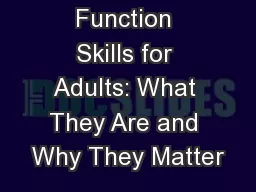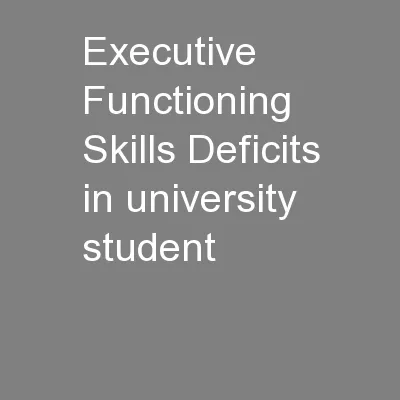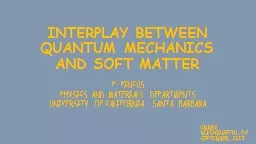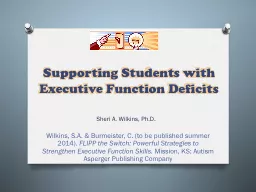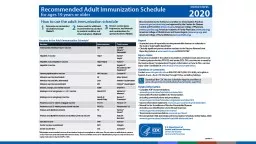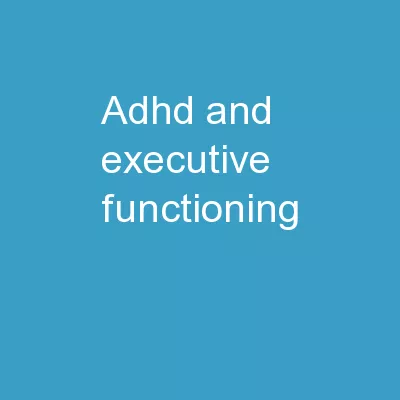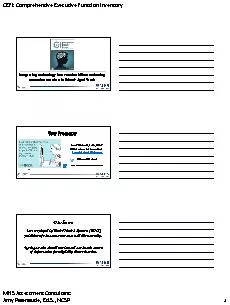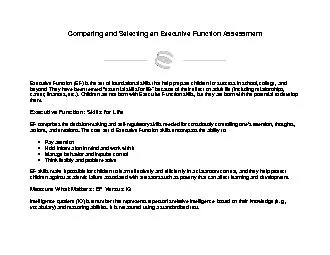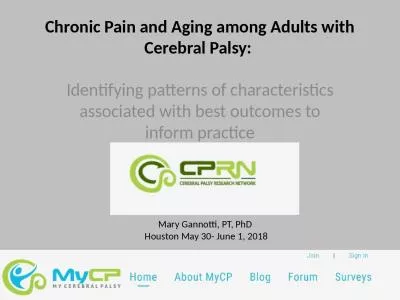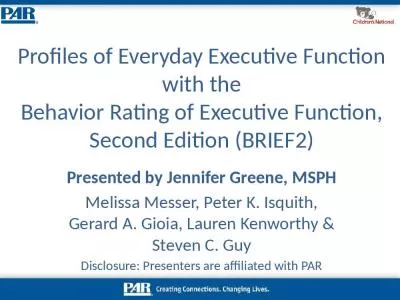PPT-Executive Function Skills for Adults: What They Are and Why They Matter
Author : min-jolicoeur | Published Date : 2018-02-27
Adult Executive Functions Silvia Bunge Director Building Blocks of Cognition Laboratory Professor Department of Psychology amp Helen Wills Neuroscience Institute
Presentation Embed Code
Download Presentation
Download Presentation The PPT/PDF document "Executive Function Skills for Adults: Wh..." is the property of its rightful owner. Permission is granted to download and print the materials on this website for personal, non-commercial use only, and to display it on your personal computer provided you do not modify the materials and that you retain all copyright notices contained in the materials. By downloading content from our website, you accept the terms of this agreement.
Executive Function Skills for Adults: What They Are and Why They Matter: Transcript
Download Rules Of Document
"Executive Function Skills for Adults: What They Are and Why They Matter"The content belongs to its owner. You may download and print it for personal use, without modification, and keep all copyright notices. By downloading, you agree to these terms.
Related Documents

